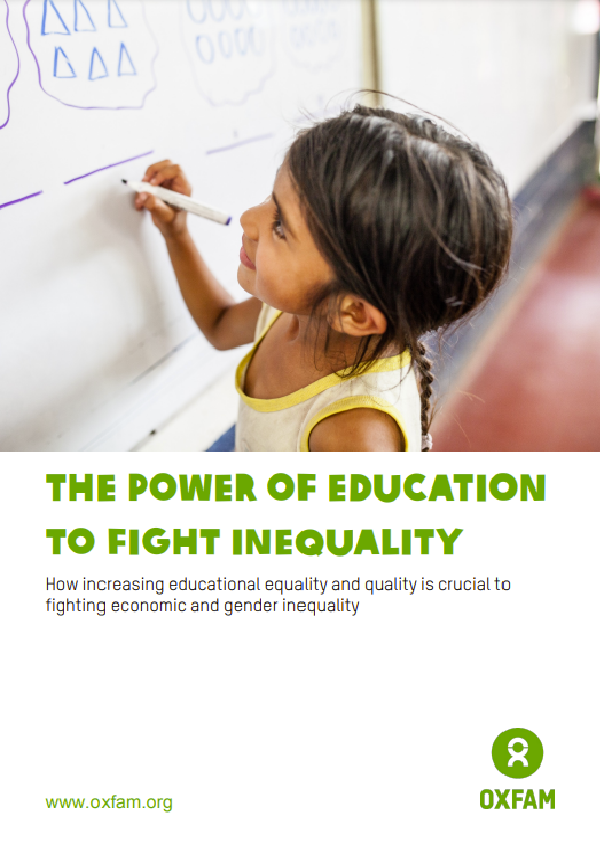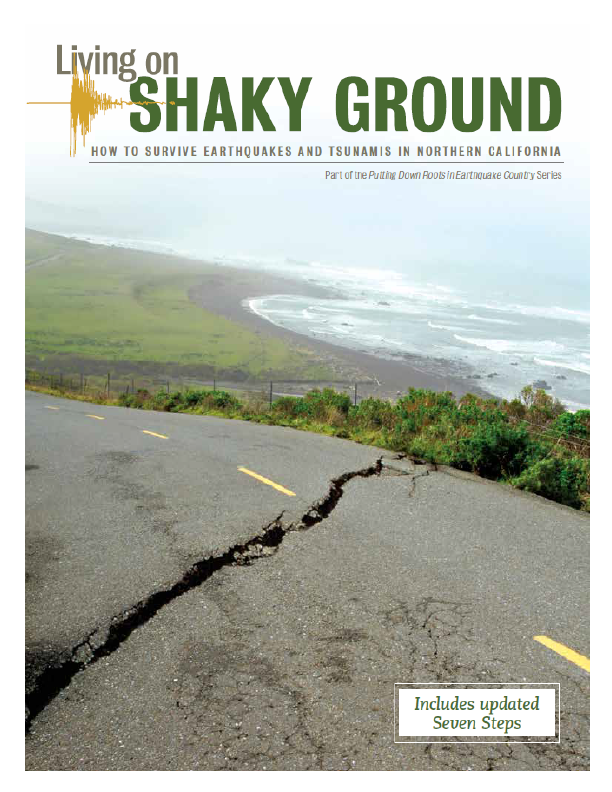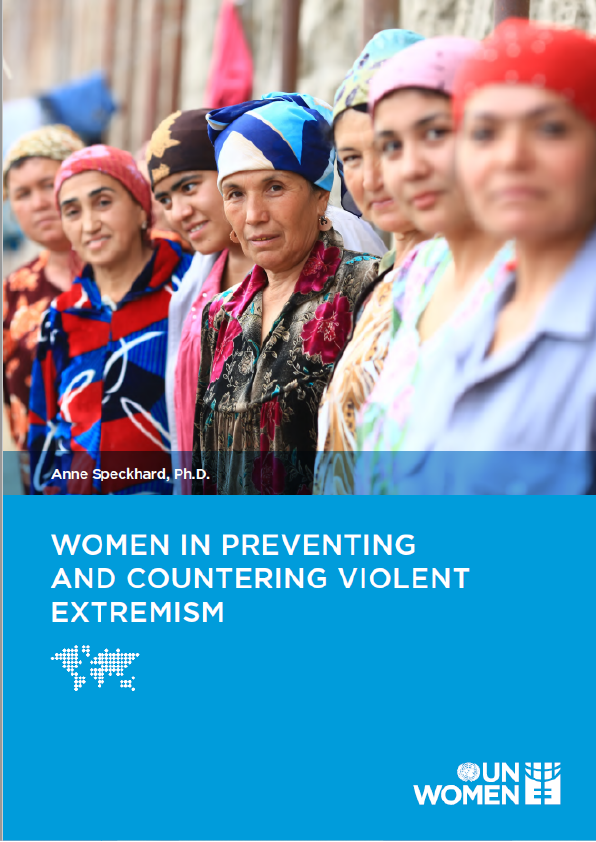The power of education to fight inequality
How increasing educational equality and quality is crucial to fighting economic and gender inequality
SUMMARY
Inequality is reaching new extremes. Significant increases in inequality of both income and wealth are leading to larger gaps between rich and poor, men and women. Gender inequality is a social phenomenon in which men and women are not treated equally. This is creating serious obstacles to overcoming poverty and exclusion and stopping us from beating poverty. With women substantially over-represented in the ranks of the poorest, this is also reinforcing gender inequality, blocking progress on women’s rights. These inequalities threaten to pull our societies apart and unravel the social contract between state and citizen, by undermining social cohesion and eroding democratic institutions.
But inequality is not inevitable. It is a political choice. It is the result of deliberate policy choices made by governments and international organizations. Conversely, it is now broadly agreed by most global policy makers that extreme inequality is also avoidable, and that concrete steps can be taken to reduce inequality.
Good-quality education can be liberating for individuals, and it can act as a leveller and equalizer within society. This report will show the unparalleled power of education to level the playing field, to help close the growing divides, and bring us closer together.
‘There can be no contentment for any of us when there are children, millions of children, who do not receive an education that provides them with dignity and honour and allows them to live their lives to the full.’
Nelson Mandela
EDUCATION THAT PULLS US APART
A highly unequal education system can also pull us further apart.
In most countries, children born into rich families will go to the best possible schools, very often being privately educated. They will have small class sizes, good teachers and get good results. These students will be given multiple opportunities to grow their inherited privilege.
Girls and boys born into poverty, suffering from ill health and malnutrition, arrive at the school gates already disadvantaged – if they arrive there at all. They will then struggle with overcrowded facilities that lack trained and qualified teachers, textbooks and toilets.
Pulled out of school before their brothers, millions more of the world’s poorest girls will continue to have their life chances stymied by an education that is all too brief.
Inequality is not inevitable. It is a political choice. 4 New analysis by Oxfam, using data from UNESCO, shows that in developing countries, a child from a poor family is seven times less likely to finish secondary school than a child from a rich family.
Even in rich countries, only three-quarters of children from the poorest families complete secondary education, compared to 90% of children from the richest families.
Inequalities of income are compounded with other inequalities of gender, ethnicity, disability and geography to form a suffocating web of exclusion. In a poor rural area of Pakistan, girls are three times as likely as poor boys to have never attended school.10 In India, the median number of years of education girls from the poorest families receive is zero, compared to 9.1 years for girls from the richest families.11 Educational inequalities are also driven by policies that encourage commercialization of education and expand private provision of schooling through public-private partnerships (PPPs), which can deepen segregation and stratification in education systems.
When good education can only be accessed by families with money, it undermines social mobility; it ensures that if you are born poor, you and your children will die poor, no matter how hard you work. It also undermines our societies, as the children of the wealthy are segregated from the children of ordinary families from an early age.
‘I have seen so many clever girls and boys who score highly despite coming from poor backgrounds. I remember Chimwemwe Gabisa – she was brilliant at mathematics, the best I have taught. She finished secondary school but could not proceed to college for lack of funds.’
Nellie Kumambala, secondary school teacher, Lumbadzi, Malawi
While schooling remains segregated by class, wealth, ethnicity, gender or other signifiers of privilege and exclusion, this cements inequality. Segregated patterns of schooling build segregated communities, driving a wedge between the haves and the have-nots, right at the start of life.











